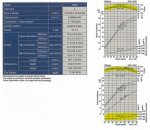Creature Meadow
Well-known member
Lifetime Member
Equipment
2012 L4600, Disk, Brush Hog, GB60 Garden Bedder, GSS72 Grading Scraper
I do a lot of tasks that do not require PTO RPMS, like today using loader to rip up roots.
My tractor is a 2012 L4600DT.
With no regen do I really need to run her wide open or even close to it when not needed?
Using loader today ripping up roots ran it at 1500 PTO is closer to 2500 and idle is at 800.
Just seems a waste but no expert on tractors and diesel engines or hydraulics.
Brush hogging I run it at PTO, subsoiling PTO and 4wd, tater plowing PTO.
But just working around the house running garden bedder, disking in garden, moving various things with the loader, cruising around the farm I run it from 1000 to 1500.
Thoughts on what is best in the long haul, no intentions of ever buying another tractor. Want her to last.
With regards to lasting I only use SUDT2 fluids, OEM filters, Lucas Red and Tacky grease and next oil change will be Amsoil Diesel Heavy Duty. I do use Wicks air filters but all others OEM.
Thoughts on what is best.
Thanks,
Jay
My tractor is a 2012 L4600DT.
With no regen do I really need to run her wide open or even close to it when not needed?
Using loader today ripping up roots ran it at 1500 PTO is closer to 2500 and idle is at 800.
Just seems a waste but no expert on tractors and diesel engines or hydraulics.
Brush hogging I run it at PTO, subsoiling PTO and 4wd, tater plowing PTO.
But just working around the house running garden bedder, disking in garden, moving various things with the loader, cruising around the farm I run it from 1000 to 1500.
Thoughts on what is best in the long haul, no intentions of ever buying another tractor. Want her to last.
With regards to lasting I only use SUDT2 fluids, OEM filters, Lucas Red and Tacky grease and next oil change will be Amsoil Diesel Heavy Duty. I do use Wicks air filters but all others OEM.
Thoughts on what is best.
Thanks,
Jay


